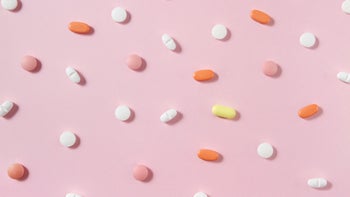
10 Jardiance Side Effects and How to Manage Them
Key takeaways:
Jardiance (empagliflozin) is a medication FDA approved to treat Type 2 diabetes, chronic kidney disease, and heart failure. It has several side effects to be aware of.
Common Jardiance side effects include urinary tract infections (UTIs) and fungal (“yeast”) infections of the genitals.
More serious Jardiance side effects include dehydration, low blood glucose (sugar), and serious infection. Ketoacidosis (too much acid in the blood) is also possible but rare.
Table of contents

Jardiance (empagliflozin) is a commonly prescribed medication for several health conditions. If you have chronic kidney disease (CKD), heart failure, or Type 2 diabetes, you may take Jardiance. But how safe is it? And what Jardiance side effects should you know about?
What is Jardiance?
Jardiance is a sodium-glucose co-transporter 2 (SGLT2) inhibitor. These medications are also nicknamed “flozins” because of how their generic names end. Jardiance is a tablet taken by mouth once a day. It comes in 10 mg and 25 mg dosages.
Jardiance is FDA approved to:
Help lower blood glucose (sugar) levels in adults and children ages 10 years and older with Type 2 diabetes when combined with a diabetes-friendly diet and regular exercise
Lower the risk of death due to heart problems in adults with Type 2 diabetes and heart disease
Lower the risk of hospitalization and death from heart problems in adults with heart failure
Lower the risk of worsening kidney function, hospitalization, and cardiovascular death from heart problems in adults with CKD
Jardiance side effects at a glance
Jardiance side effects can range from mild to severe. Thankfully, serious side effects are rare.
Common or mild Jardiance side effects include:
Urinary tract infections (UTIs)
Genital fungal (“yeast”) infections
Urinating more than usual
Upper respiratory tract infections
Raised cholesterol
Nausea
Joint pain
Rare but serious Jardiance side effects include:
Low blood glucose
Serious genital infections
Serious UTIs, including kidney infections
Dehydration
Ketoacidosis (too much acid in the blood)
Below is a list of 10 Jardiance side effects you should be aware of. Keep in mind, these aren’t the only possible side effects you could experience — just some of the most notable.
Affording your medication: Check out our expert tips for saving on Jardiance, from copay cards to patient assistance programs.
Jardiance interactions: Learn about medications that can interact with Jardiance, plus foods you should avoid while taking it.
Jardiance and weight loss: You may have heard that some diabetes medications can help you lose weight. But does Jardiance cause weight loss?
1. Urinary tract infections
Jardiance treats Type 2 diabetes by making you urinate out extra glucose. This lowers the amount of glucose in your bloodstream. But it can put you at risk for UTIs. Most of these infections are mild. But if left untreated, UTIs can lead to severe complications, such as kidney infections.
It’s important to note that in Jardiance’s clinical trials for Type 2 diabetes, this side effect was also seen in a similar number of people taking a placebo (a pill with no medicine in it). This is because people with diabetes have a higher risk of UTIs than people without diabetes, regardless of what medication they’re taking. So, some experts question how much the medication actually raises the risk of UTIs.
2. Genital infections
Another common Jardiance side effect is fungal (“yeast”) infections on or around the genitals. Vaginal yeast infections tend to happen most often. But genital yeast infections in men can also happen around the penis and scrotum.
Similar to with UTIs, the extra glucose being urinated can attract fungi and bacteria to the external genitals. Most of these infections are mild and easily treated. Cleaning your genital area regularly can help prevent infections.
Rarely, a life-threatening infection of the male and female genitals, called Fournier’s gangrene, can also occur. This infection causes fever and swollen or painful genital tissues. It can also cause skin in those areas to peel off. This could require surgery to remove and repair, along with antibiotics.
3. Urinating more often
Because Jardiance gets rid of extra glucose through the kidneys, you may urinate more. You may notice yourself going to the bathroom more often. Some people also report they wake up to urinate more than usual overnight. It’s recommended to take your dose in the morning to help lower the need to urinate overnight.
Because Jardiance may make you urinate more often, it can lower your level of body fluids. This level may be even lower if you take other medications that make you urinate more, such as diuretics (“water pills”). You may become thirsty as a result.
It’s important to stay hydrated to help prevent too much fluid loss. But if you have heart failure, double-check how much fluid you should be drinking with your cardiology care team first.
4. Upper respiratory tract infections
People in Jardiance’s clinical trials also reported upper respiratory tract infections (URTIs). Symptoms of a URTI include runny or stuffy nose, sneezing, or sore throat. Common examples include the common cold and sinus infections. These infections should be mild and resolve on their own.
Slightly more people taking the 25 mg dosage of Jardiance reported URTIs compared to those taking the 10 mg dosage. But a similar number of people taking a placebo also reported them. So your URTI could be unrelated to Jardiance.
If you develop symptoms of a URTI, follow your usual self-care routine for when you’re sick. Getting enough rest and staying hydrated are great places to start. You can also ask your prescriber or pharmacist whether over-the-counter cold medications would be safe for you to take.
If you’re not feeling better within about a week, contact your healthcare team for next steps. You should also reach out to them if your symptoms worsen or are severe. This isn’t a typical Jardiance side effect.
5. High cholesterol
In some people, Jardiance can make their cholesterol go up — in particular, LDL (low-density lipoprotein, or “bad cholesterol”). Clinical trials found that higher doses of Jardiance were linked to higher LDL levels. Your prescriber should monitor your cholesterol while taking Jardiance to make sure this isn't an issue for you.
But there are steps you can take at home to help promote healthy cholesterol levels:
Increase your dietary fiber intake
Eat foods high in omega-3 fatty acids, such as salmon, walnuts, and soybeans
Try to exercise more in a way that feels comfortable for you
Limit the amount of alcohol you drink
Take steps to quit smoking (if applicable to you)
6. Joint pain
Joint pain is a possible side effect of many medications. Joint pain with Jardiance is an uncommon side effect, but it’s still possible. A similar number of people taking a placebo in clinical trials also reported joint pain. So Jardiance may not be causing this symptom.
If you notice joint pain after you start the medication, let your prescriber know. They may suggest some trying gentle exercises or applying heat or ice packs to painful areas. They might also recommend topical pain relief creams, gels, or patches to help.
7. Nausea
Nausea is a listed side effect for many medications and can interfere with your routine. While not common, nausea is a possible Jardiance side effect.
If you find Jardiance makes you nauseated, try taking your dose with food. Food won’t affect how Jardiance works and may help lessen nausea.
8. Low blood glucose
Jardiance should help lower your blood glucose if you have Type 2 diabetes. But, in some cases, it could lower your blood sugar too much (hypoglycemia).
On its own, Jardiance has a low risk of causing hypoglycemia. But your risk may be higher if you’re also taking other diabetes medications that affect your body’s insulin levels. Examples of these medications include insulin and sulfonylureas, such as glipizide.
You should review when and how to treat hypoglycemia with your diabetes care team. Quick treatment can help prevent serious complications. If you experience hypoglycemia more frequently after starting Jardiance, let your prescriber know. They may adjust one or more of your medications.
9. Dehydration
As mentioned above, Jardiance can lower your amount of body fluids. This is typically mild, but in rare cases can lead to dehydration. This may then cause low blood pressure, which could make you feel faint or pass out.
Dehydration from Jardiance could also lead to kidney damage in rare cases. Your diabetes care team should monitor your kidney function while taking Jardiance to watch for signs of this serious side effect.
10. Ketoacidosis
Jardiance has been found to cause ketoacidosis (too much acid in the blood) in some cases. This is a serious condition that could be deadly.
This was mainly seen in people with Type 1 diabetes taking Jardiance — not Type 2 diabetes. Nonetheless, it could still happen. Ketoacidosis is a medical emergency.
Common symptoms of ketoacidosis include:
Thirst
Dry mouth
Tiredness
Vomiting
Stomach pain
Fruity-smelling breath
Trouble breathing
Confusion
If you believe you’re experiencing ketoacidosis, get medical help right away or call 911. If left untreated, this situation can become life threatening.
When should you contact your healthcare team about Jardiance side effects?
Some of the Jardiance side effects mentioned can be quite severe, such as ketoacidosis, low blood glucose, and serious genital infections. Contact your healthcare team or seek medical attention if you notice symptoms of these serious side effects.
You should also reach out to your healthcare team if you have symptoms of a UTI or genital yeast infection. These infections typically require antibiotics or antifungal medications to treat them.
But even if your side effects aren’t serious, they could certainly be bothersome. If you’re experiencing anything excessive or worrisome, let your healthcare team know. They can help you decide if Jardiance is the best option for you.
The bottom line
Jardiance (empagliflozin) is a safe and effective medication to help manage Type 2 diabetes, heart failure, or chronic kidney disease. But it can cause a number of side effects.
The most common Jardiance side effects include urinary tract infections and genital yeast infections. Mild side effects can typically be managed at home or easily treated. But some Jardiance side effects, such as low blood glucose (sugar) and dehydration, can be serious. So, let your healthcare team know if you think you may be experiencing them.
Why trust our experts?



References
Aggarwal, A., et al. (2019). High prevalence of genital mycotic infections with sodium-glucose co-transporter 2 inhibitors among Indian patients with type 2 diabetes. Indian Journal of Endocrinology and Metabolism.
Boehringer Ingelheim Pharmaceuticals. (2022). Jardiance [package insert].
Eli Lilly and Company. (2023). US FDA approves Jardiance (empaglioflozin) for the treatment of type 2 diabetes in children 10 years and older.
National Organization for Rare Disorders. (2024). Fournier gangrene.
Sizar, O., et al. (2023). Empagliflozin. StatPearls.
Was this page helpful?
Related Articles
Browse medications
View AllResearch prescriptions and over-the-counter medications from A to Z, compare drug prices, and start saving.




























